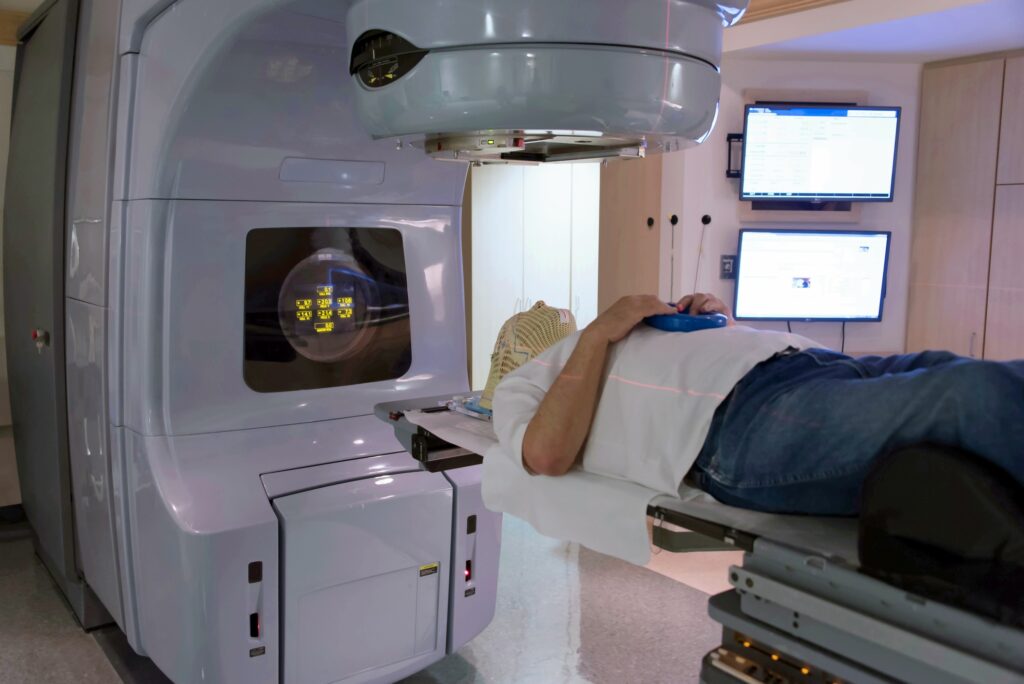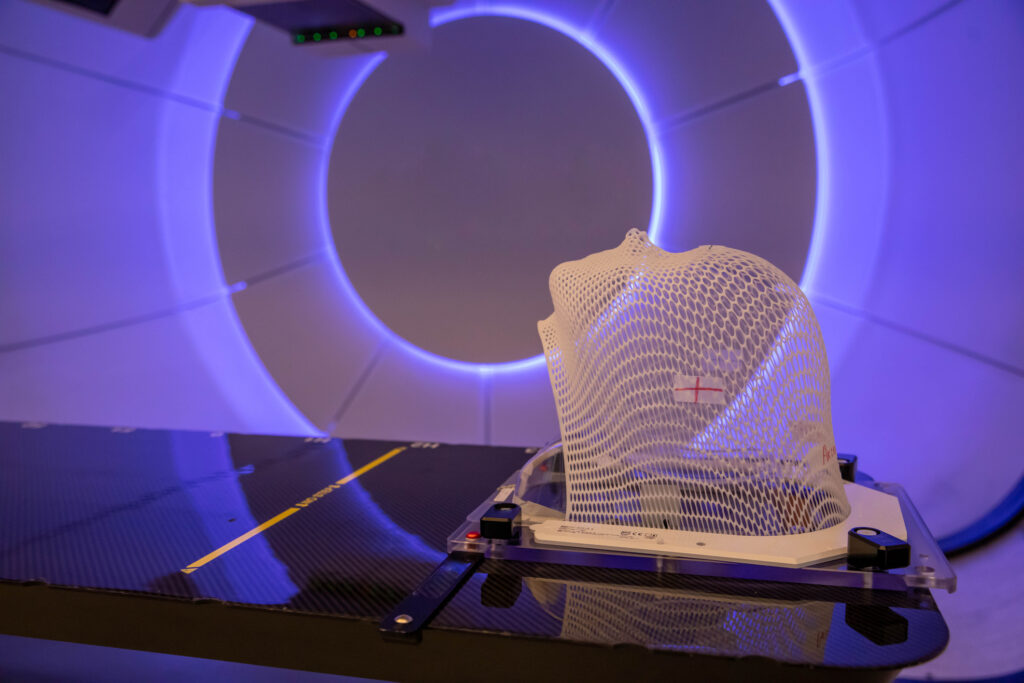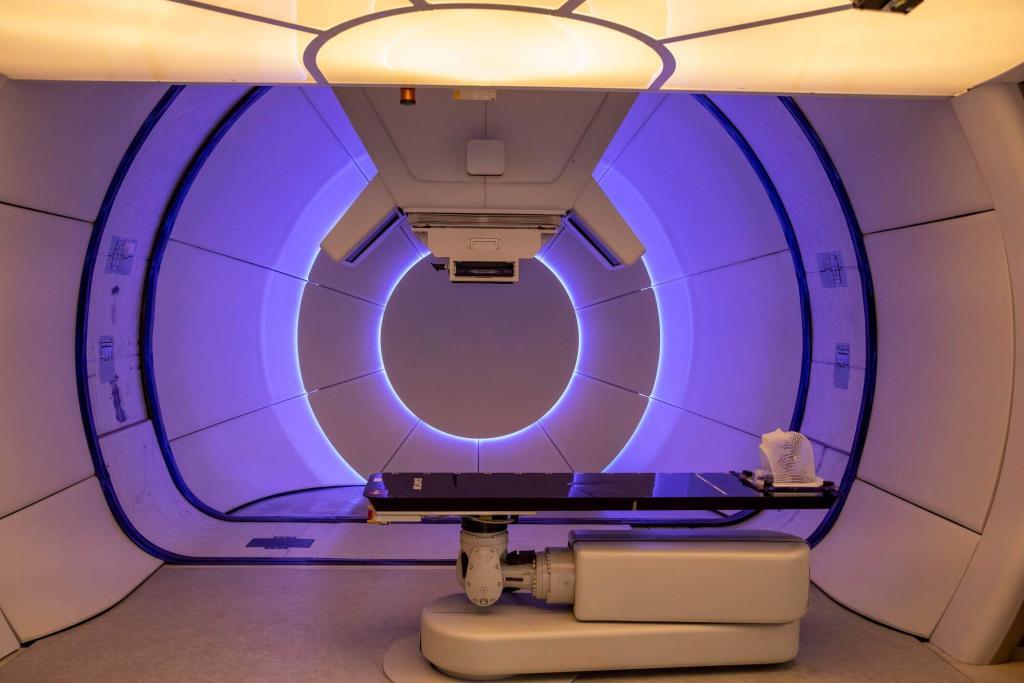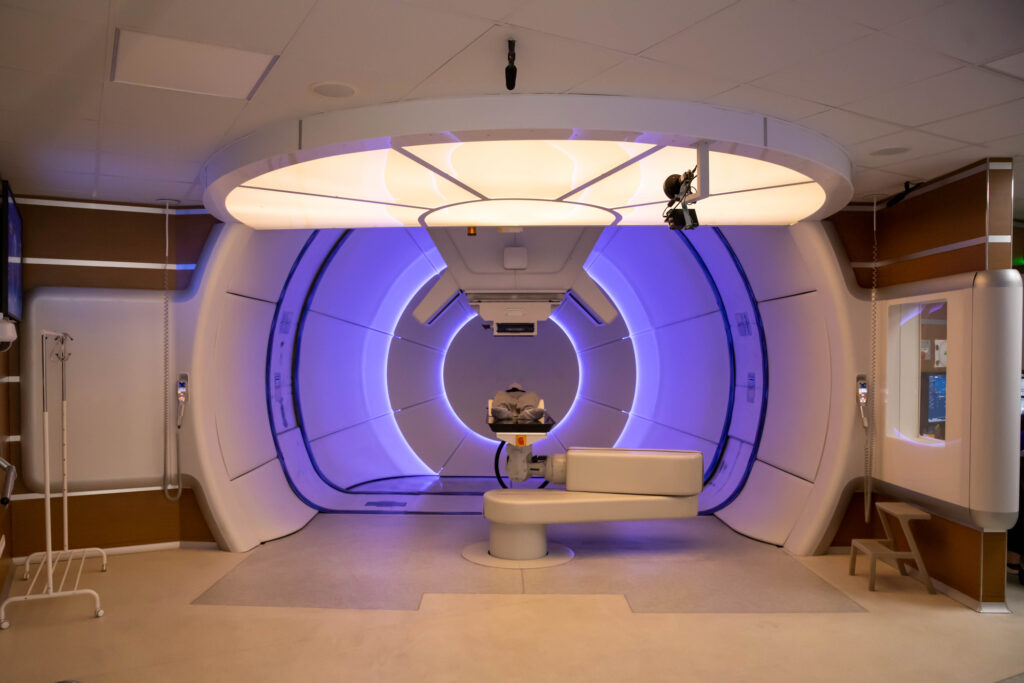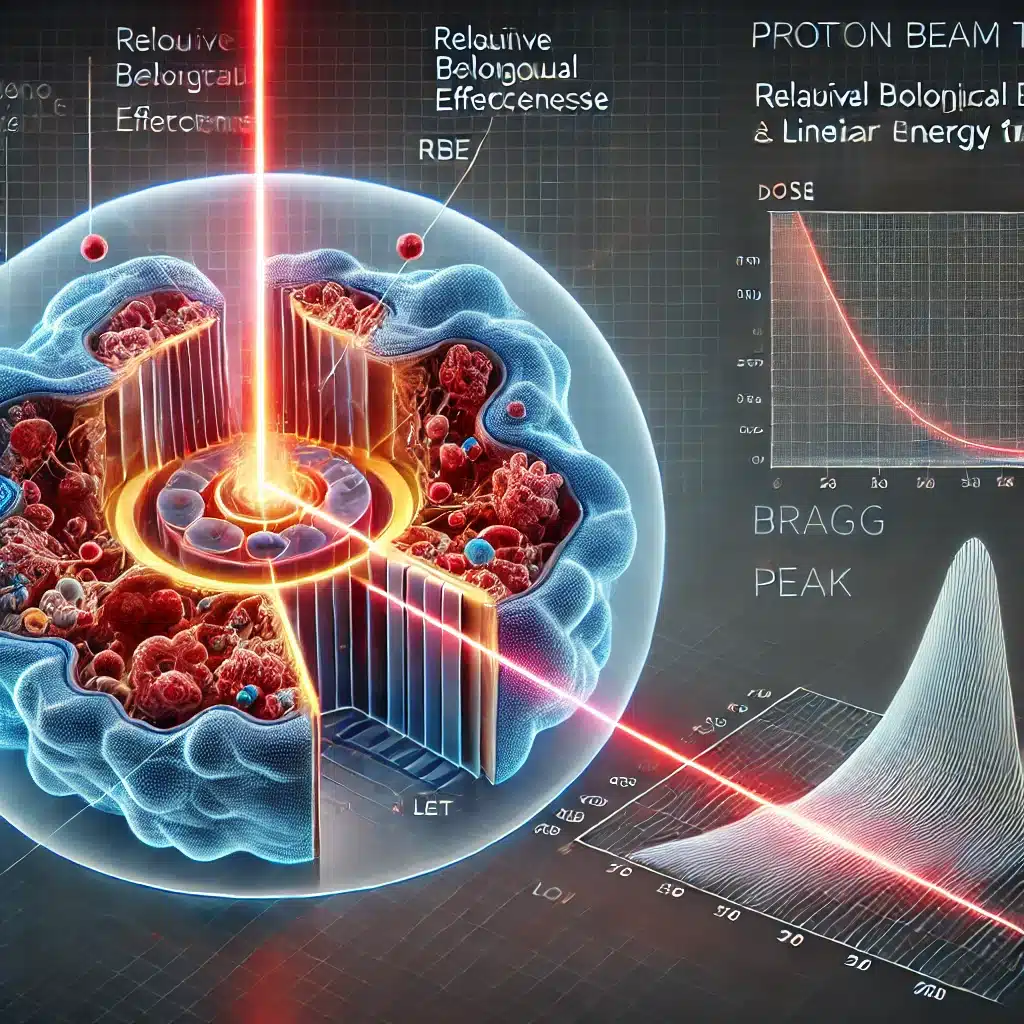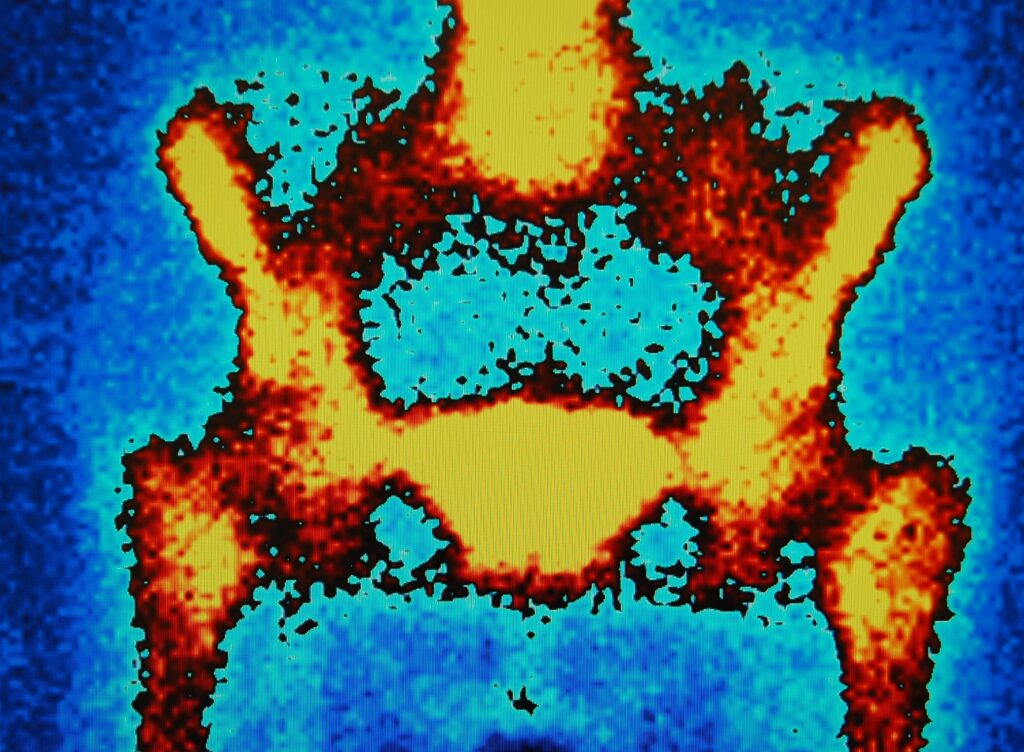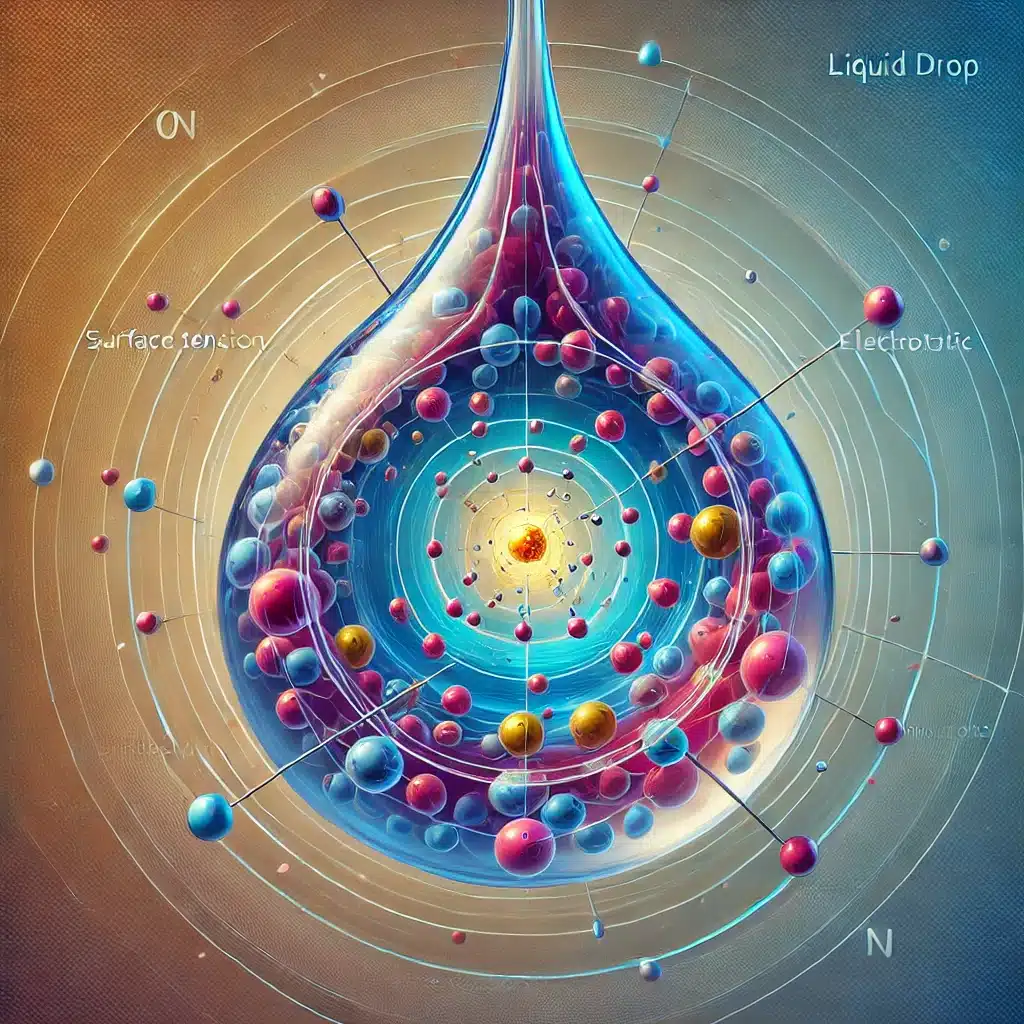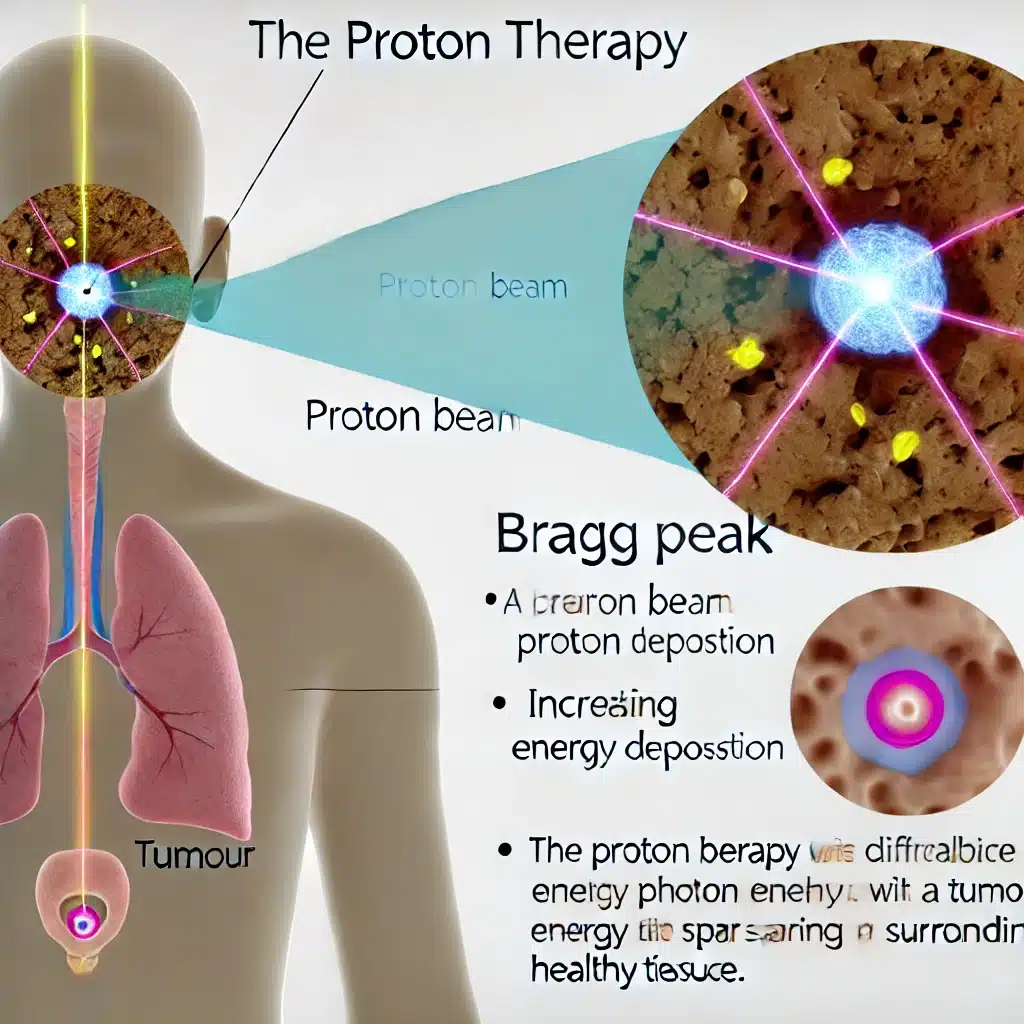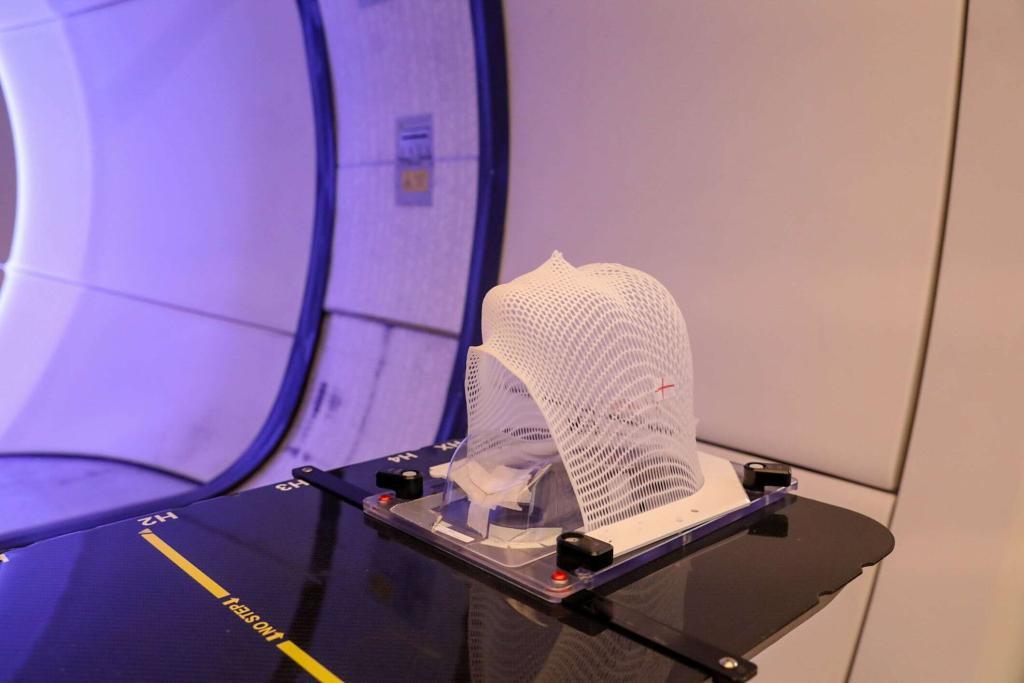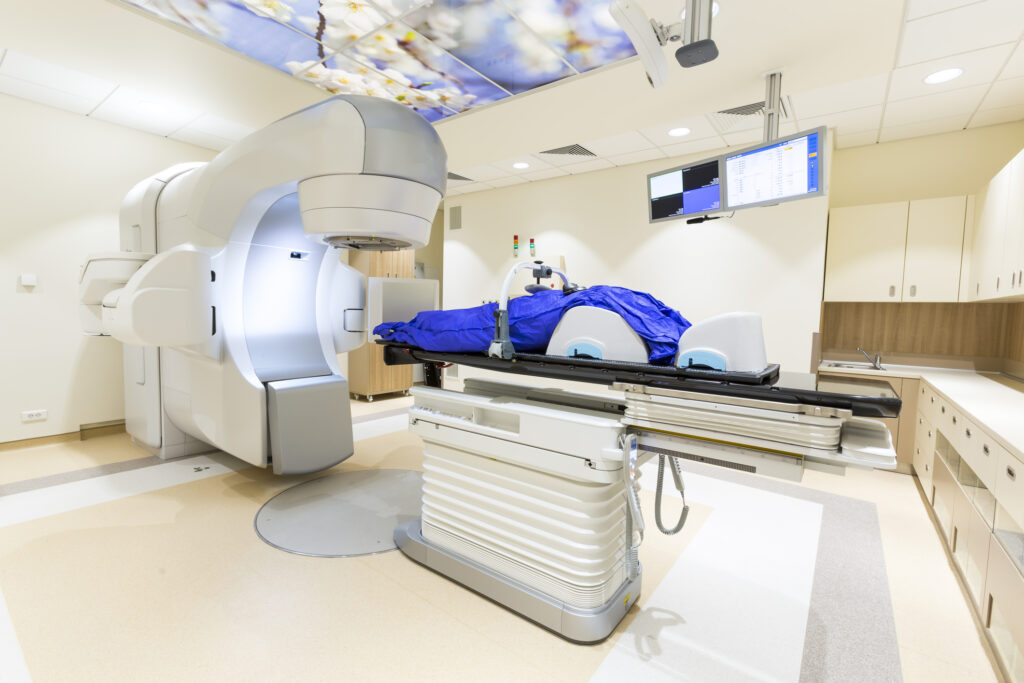Proton Therapy
Proton Therapy (PT) refers to proton beam therapy (PBT) as a cancer-killing machine with sub-millimetre precision. It can target tumours by sparing surrounding healthy tissues and minimising side effects. Proton Beam Therapy has become an important treatment modality for non-small cell lung cancer (NSCLC) due to the physical properties of the Bragg peak. At the Bragg peak, most of the proton dose is deposited across a narrow range, reducing the no-exit dose exposures to structures in the thorax.
Proton beam therapy is divided into passive scattering and pencil beam scanning proton therapy. In both techniques, a single monoenergetic (~250 MeV) proton beam the size of a spot (4 mm cross-sectional beam diameter) delivers the proton dose to the form of the tumour within the body. The entry of the proton beam can disperse particles to the orthogonal plane or parallel to the target.
Proton Therapy is an effective strategy to treat several types of tumours and has been used over several decades, primarily since the 1950s. The proton beam can conform to the shape, position and proximity of surrounding normal organs at risk (OARs), such as the heart, spinal cord and lung parenchyma. In addition, proton beam therapy may allow for a reduction in thoracic radiation therapy. Treating small tumours related to eye malignancies usually involves a single scattering of the proton beam.
However, a more dense irregular NSCLC primary tumour would require a double scattering with high power to allow the spot-size proton beam to dissipate over a wider volume. The PBT energy exiting from the cyclotron/synchrotron can be attenuated by adjusting the carbon double wedge with the energy selection system.
Hence, to obtain maximum energy, the protons stop at the distal edge of a tumour. Since most tumours are irregular, an aperture shapes the beam around the contour of the tumour volume plane. This approach to precision radiotherapy delivers almost no irradiation to surrounding healthy tissues and organs. Furthermore, proton beam radiotherapy provides exceptional dose distributions and an advantage in dosimetry over photon beam therapy.
You are here:
home » proton therapy

